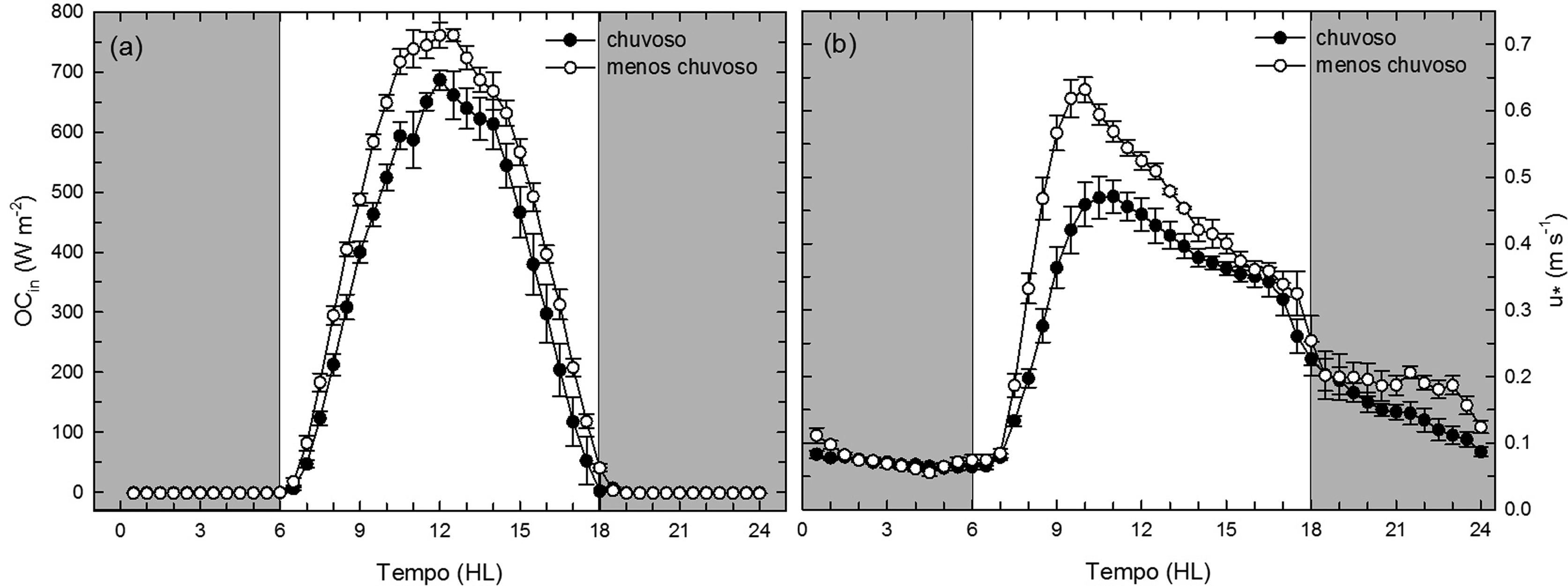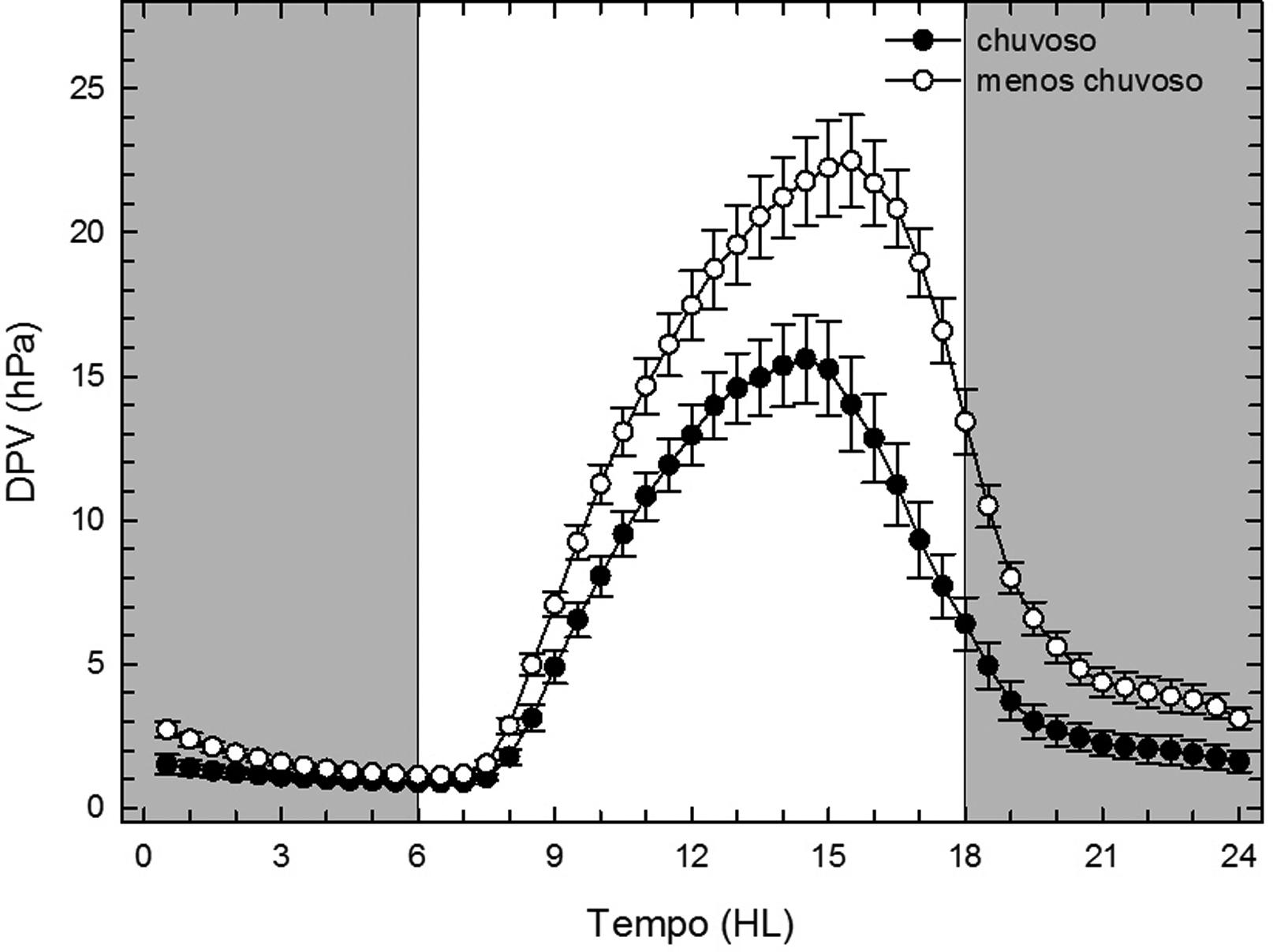Abstract
Terrestrial ecosystems are important for the CO2 exchange between surface and atmosphere. This work presents the atmospheric conditions and CO2 measurements in interspecific hybrid of oil palm in eastern Amazonia, during El Niño year. The experiment was carried out in Moju - Pará, where a micrometeorological tower was installed to obtain meteorological and CO2 data during the period from january to december 2015. The diurnal averages of CO2 uptake peaked at noon, with 22.3 (± 0.98) μmol m-2 s-1 in the wet season and 21.0 (± 0.47) μmol m-2 s-1 in the dry season. There was little variation in nocturnal averages of CO2 emission, about 5 (± 0.20) μmol m-2 s-1, in both wet and dry seasons. The diurnal averages of CO2 concentration were lower and nocturnal averages were higher. Generally, the daily CO2 exchange cycle presented a difference between the wet and dry season. These results contribute to a better understanding of the temporal trend of CO2 fluxes in agricultural crop during drought year in eastern Amazonia, generating new pieces of information about the interaction between oil palm and atmosphere.
Keywords:
carbon dioxide; fluxes; oil palm







